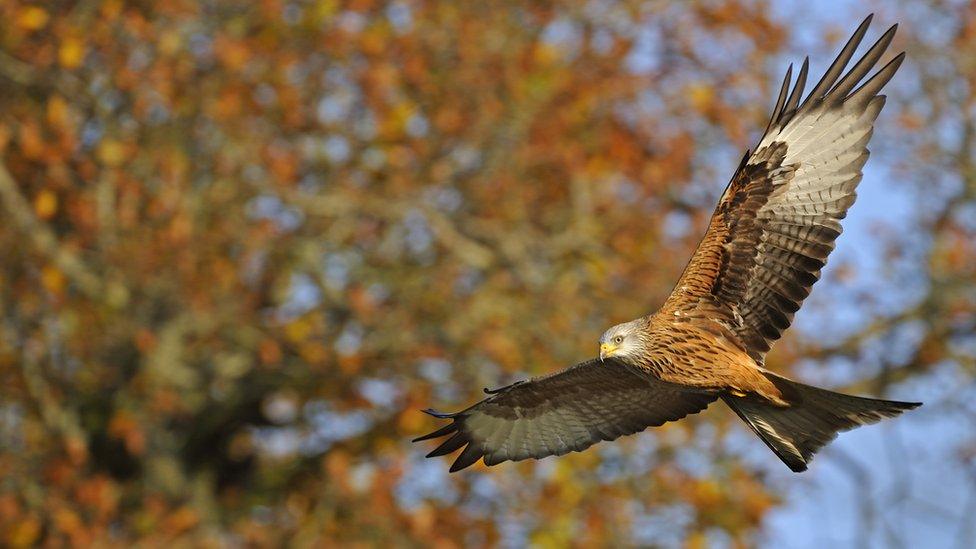Red kites: Birds of prey sent to Spain to boost numbers
- Published
- comments

Red Kites from Britain are being flown to Spain to help improve population numbers there.
Experts will send 30 of the reddish-brown birds of prey to Spain because they are under threat from poisoning and lack of food.
It is hoped these British-born kites will breed in Spain and increase the population in the country.
Declining population
Red kites were brought to the UK from Spain and Sweden, to help boost numbers in the 1990s
Around 30 years ago, the situation was the other way round and British red kites were in decline and the bird population was doing well in Spain.
The birds of prey were close to extinction - that means they would no longer exist - in the UK due to years of human action, including egg collecting, poisoning and shooting.
In the 1990's conservationists from Britain went to Spain to collect wild red kites to release them in the Chiltern Hills, England.
Dr Ian Evans of Natural England, was part of the team that went to Spain.
"Those birds we took from Spain in the '90s have done really well in Britain - we're talking 4,000-plus pairs in the UK now, which is an incredible success story," he told 成人快手 News.
Since then red kits in the UK have increased and it's now home to more than 10% of the world population.
The birds have boosted numbers across Europe - apart from in southern Spain, Portugal and some small areas of Germany where they are in decline.
Red kites are protected under UK law
They are one of Britain's largest birds of prey, known for their reddish-brown body and "mewing" calls
They are scavengers and like to feed on worms and sometimes small prey such as rabbits
How will the birds be introduced in Spain?
The project will start this week, with 15 red kites flown and released in southern Spain.
The birds will be fitted with the latest technology so scientists can monitor how they are doing in their new habitat.
There will be another 15 birds released this year and there are plans to release 30 more birds in each of the next two years.
RSPB's Duncan Orr-Ewing said: "You need to find 90 to 100 birds to create a sustainable population in a given area.
"That should be sufficient to create a new breeding nucleus of the birds," he said.
There are a number of conservation groups working together on the project including RSPB, Forestry England, Natural England, Roy Dennis Wildlife Foundation and Accion por el Mundom Salvaje (Amus) in Spain.
- Published23 June 2020
- Published20 June 2022
- Published15 May 2020
